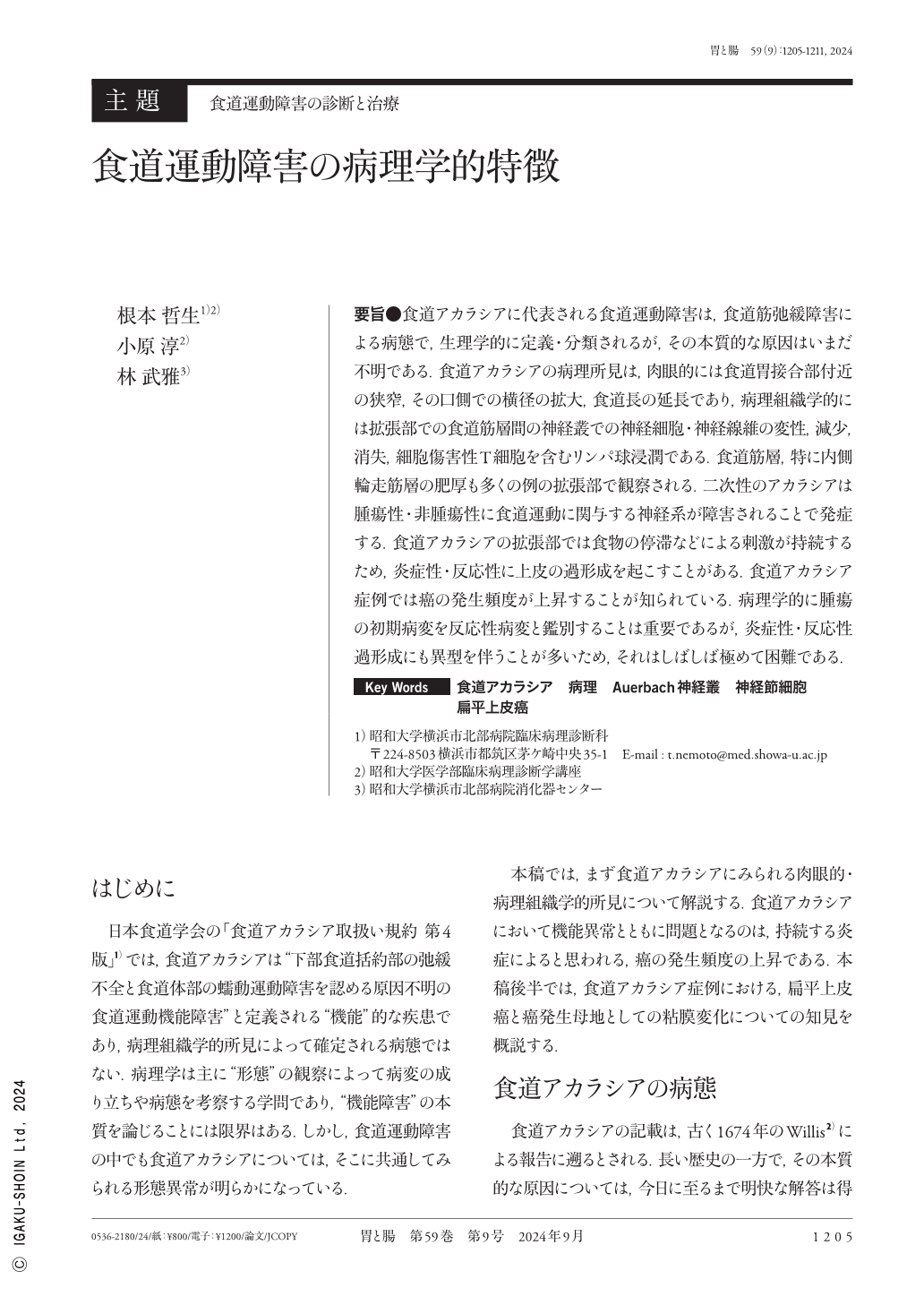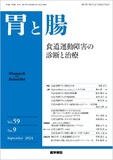Japanese
English
- 有料閲覧
- Abstract 文献概要
- 1ページ目 Look Inside
- 参考文献 Reference
要旨●食道アカラシアに代表される食道運動障害は,食道筋弛緩障害による病態で,生理学的に定義・分類されるが,その本質的な原因はいまだ不明である.食道アカラシアの病理所見は,肉眼的には食道胃接合部付近の狭窄,その口側での横径の拡大,食道長の延長であり,病理組織学的には拡張部での食道筋層間の神経叢での神経細胞・神経線維の変性,減少,消失,細胞傷害性T細胞を含むリンパ球浸潤である.食道筋層,特に内側輪走筋層の肥厚も多くの例の拡張部で観察される.二次性のアカラシアは腫瘍性・非腫瘍性に食道運動に関与する神経系が障害されることで発症する.食道アカラシアの拡張部では食物の停滞などによる刺激が持続するため,炎症性・反応性に上皮の過形成を起こすことがある.食道アカラシア症例では癌の発生頻度が上昇することが知られている.病理学的に腫瘍の初期病変を反応性病変と鑑別することは重要であるが,炎症性・反応性過形成にも異型を伴うことが多いため,それはしばしば極めて困難である.
Esophageal motility disorders, represented by achalasia, are pathophysiological conditions caused by esophageal muscle relaxation disorders. They are physiologically defined and classified, but their essential causes remain unknown. The pathomorphological results of achalasia are, macroscopically, narrowing just above the esophagogastric junction, widening of the transverse diameter on the proximal side of stenosis, and elongation of the esophagus. Microscopically, ganglion cells and nerve fibers at the nerve plexus of Auerbach, which is located between the inner and outer muscular layers, degenerated, reduced, and disappeared. T lymphocytes, including cytotoxic T cells, are the main infiltrating lymphocytes at the plexus. Esophageal wall thickening, particularly the inner muscle layer, is observed. These histological changes are mainly seen in the dilated esophageal segment. Secondary achalasia develops from neoplastic or non-neoplastic damage of the nervous system involved in esophageal motility. Irritation due to food stagnation persists in the dilated area of esophageal achalasia, which may cause inflammation and reactive epithelial hyperplasia. Popularly, the incidence of cancer increases in esophageal achalasia cases. Pathologically distinguishing early cancer lesions from reactive lesions is important, but it is extremely difficult because reactive hyperplasia lesions frequently show structural and cytological atypia.

Copyright © 2024, Igaku-Shoin Ltd. All rights reserved.


